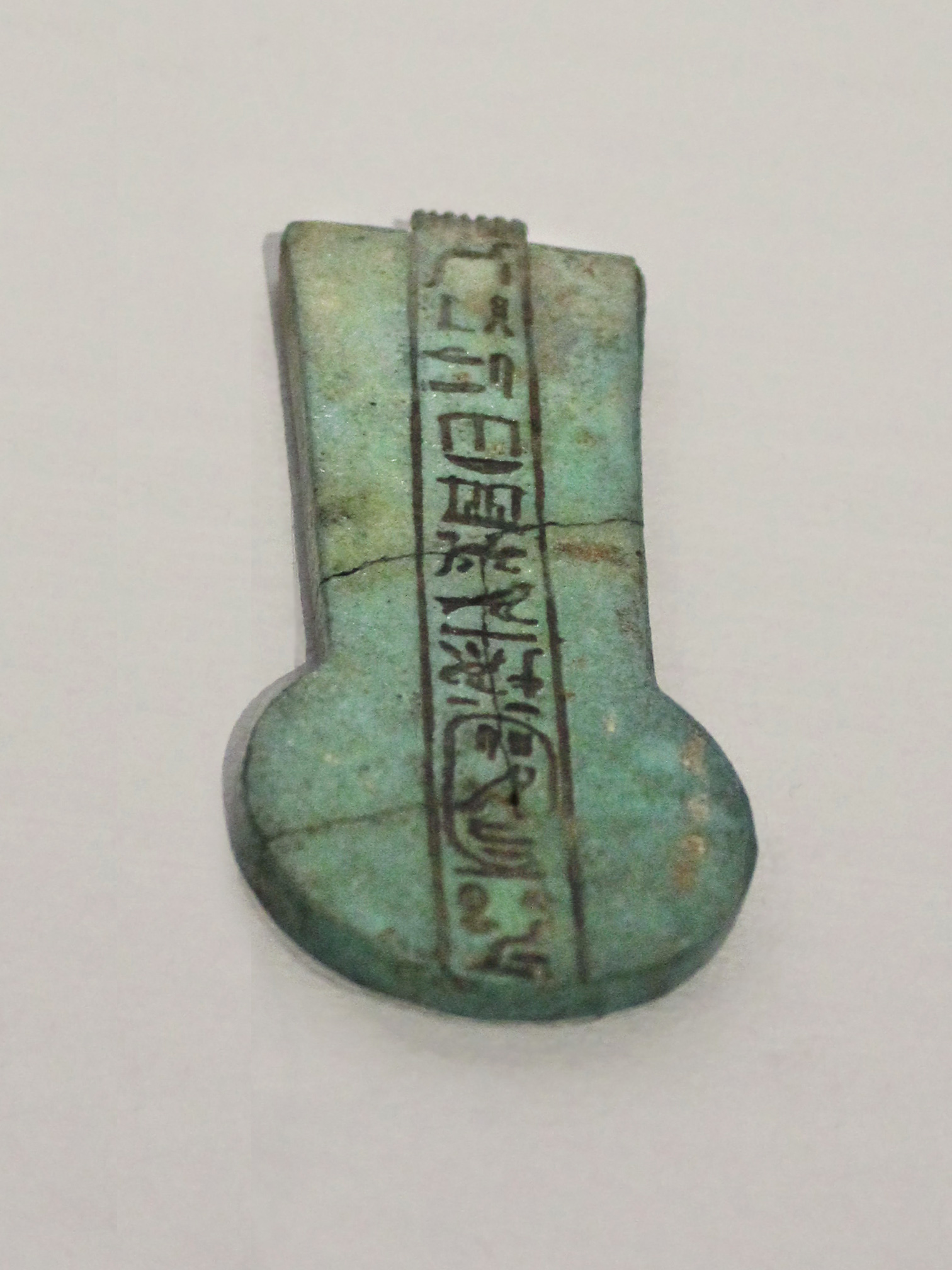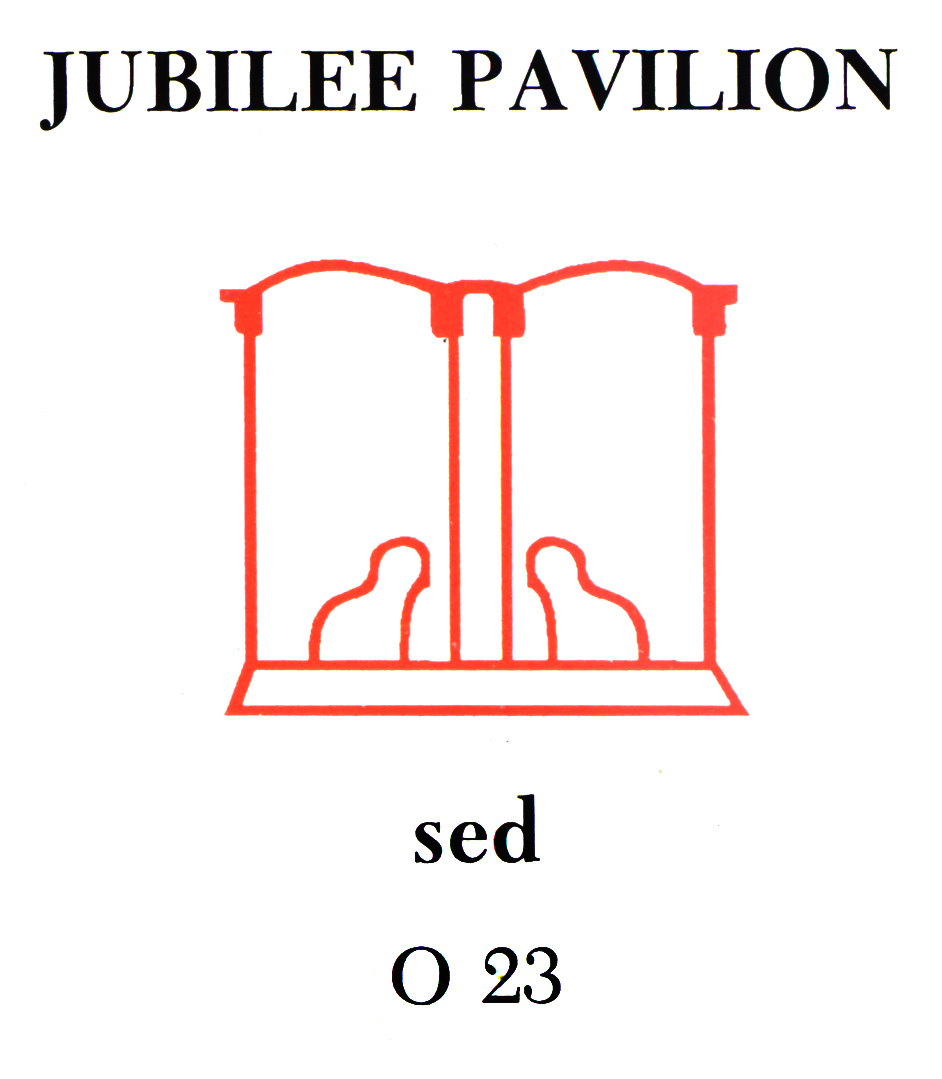
Faience, 3 1/2 × 1 9/16 × 1/4 in. (8.89 × 3.97 × 0.64 cm)
Gift of Frank J. and Victoria K. Fertitta ,
LACMA #M.80.198.115
One of the easily recognized hieroglyphs on this counterpoise is the "sed" glyph:

|
"The heb-sed, or 'jubilee festival,' consisted of a series of rituals of royal renewal which seem to have originated at the veryb beginnings of Egyptian history. The king's jubilee was supposedly celebrated fro the first time thirty years after his accession, and thereafter at much shorter intervals. Rather than a simple commemoration of the king's accession, however, the festival was clearly designed to renew the monarch's power and to rejuventate his rule over the Two Lands." (Richard Wilkinson, _Reading Egyptian Art_, (Thames and Hudson, 1992), page 145) We can see the sedge of Upper Egypt and the bee of Lower Egypt in the heiroglyphs. Possibly this was worn at one of Psamtik I's Heb Sed festivals. |


